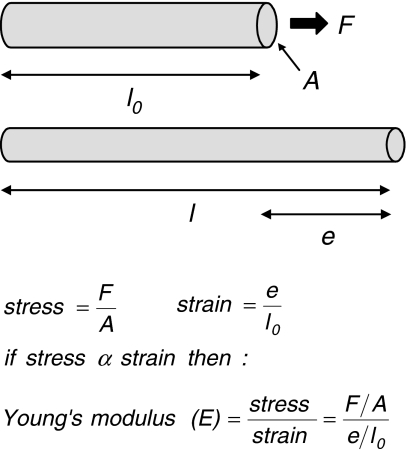Fig. 3a, b.
Quantifying elasticity. a The elastic modulus defines the degree to which a material deforms when a tensile force is applied. Where a rod of length l0 and cross-sectional area A is stretched to a length l by a force F, the elastic modulus (E) is calculated from the stress divided by the strain. b The value of E relates to the biological function of a macromolecules; the elastic modulus of fibrillar collagen (1,200 MPa), for example, is relatively high reflecting the role of collagen fibrils in resisting tensile forces (Gosline et al. 2002), in contrast E for elastin is low (1.1 MPa) (Aaron and Gosline 1981) and a small force will produce a large extension. The elastic modulus of fibrillin microfibrils, however, remains controversial with estimates ranging from 1.0 MPa (Aaron and Gosline 1981) to 96 MPa (Sherratt et al. 2003)

